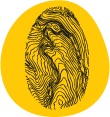
From landscape character assessment enhancements towards a policy issue. The regional landscape strategy in Azores, Portugal.
In 2005, the Regional Secretariat for the Environment and the Sea of Azores has published a book on Landscape Character Assessment to provide acknowledgment and awareness on landscape as a fundamental resource for sustainable development. In 2012, this book has been up-dated in order to define a regional strategy for the implementation of the European Landscape Convention (ELC), throughout the project EP@M - System of Macaronesian Landscape Stations, PCT-MAC 2007-2013.
This paper aims at presenting the methodology for defining a landscape regional strategy that was twofold: a new approach on the Landscape Character Assessment comparing to the one used on the first project and a participatory process to define Landscape Quality Objectives that was implemented, both at the regional and local scale.
Concerning the first, two case studies have been considered in the islands of S. Miguel and S. Jorge. The update limits of S. Miguel and S. Jorge landscape units was obtained through a methodology that has integrated spatial analysis and geographical modeling processes in geographic information systems and cluster analysis (spatial and non-spatial clustering). It consisted initially in the exploratory analysis of the available spatial information. Final set of variables to include in the model was obtained through correlation and ordination methods. After variables selection (aspect, slope, elevation, soil, land cover, buildings density), the class intervals for numerical variables were defined by histograms followed by capping related to land use constraints. Anselin Local Moran's I and Getis-Ord Gi* statistics (ArcGISTM) were used in order to identify hot spots, cold spots, and spatial outliers. Non-spatial clustering was performed using k-Means (StatisticaTM) after dendogram analysis. Different tests were performed by changing both the number of clusters as the variables weight. The final landscape units were defined through of spatial generalization processes and some boundaries were fitted after expert assessment. The results were then compared with the previous boundaries. The main differences are associated with landscape changes processes (e.g. increased urban area in S. Miguel or Juniperus brevifolia shrublands degradation by overgrazing in S. Jorge). Also noteworthy are some differences resulting from the automatic adjustment of the landscape boundaries to relief variations (e.g. ridges), and because an iterative process was used to build the digital elevation model which interpolates a hydrologically correct raster surface.
Regarding the second component of the methodology, in each of the former two islands one landscape unit has been selected to carry out a participatory approach for the Landscape Quality Objectives definition at the local scale. The integration between landscape character assessment, as a tool to identify landscape coherency, and the contribution of local people to define the landscape they are willing to in the future can be a starting point for a collaborative landscape management. On the other hand the way that various institutions were involved on the landscape regional strategy definition will be also presented once it will be determinant for the landscape sustainability in Azores.
